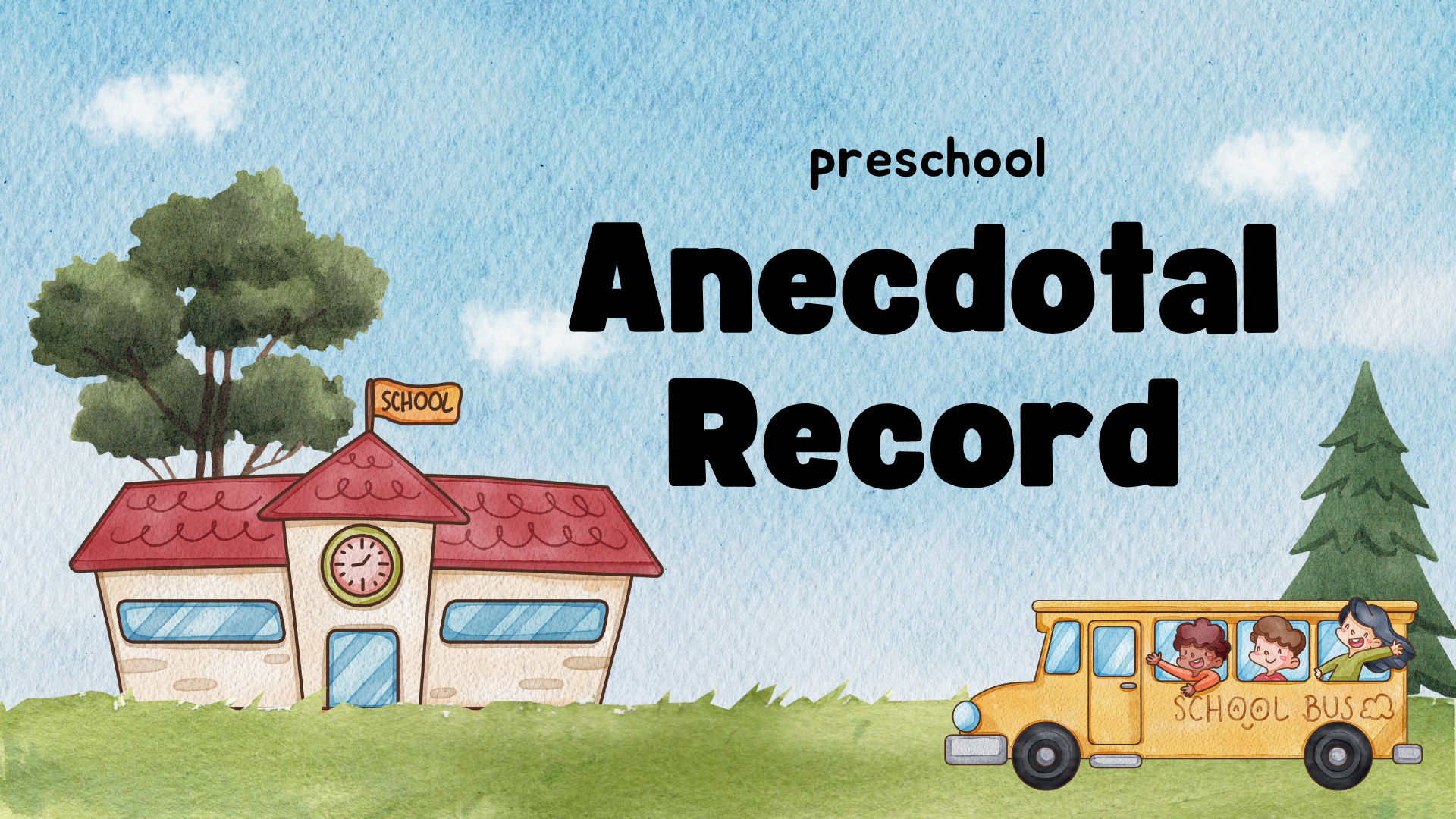Are your classroom assessments missing the real heart of a child’s development? Do you ever feel that traditional tests fail to reflect children’s social, emotional, or cognitive growth? Have you wondered how to understand better what your students truly need? If so, the answer may lie in a tool you already have access to, but may not yet be using to its full power: the anecdotal record.
An anecdotal record is more than just a simple note; it’s a real-time observation that captures a child’s behavior, language, and interaction in their natural environment. Educators consistently use anecdotal records to unlock deeper insights into individual learning journeys. These informal yet intentional observations give context to children’s actions, highlight emerging skills, and guide us toward tailored teaching strategies that support the whole child.
Whether you’re a Montessori guide, a Reggio-inspired educator, or a preschool teacher in a busy classroom, learning to harness the power of the anecdotal record will transform how you see, understand, and support your students. Let’s explore how these small but mighty learning snapshots can significantly impact.
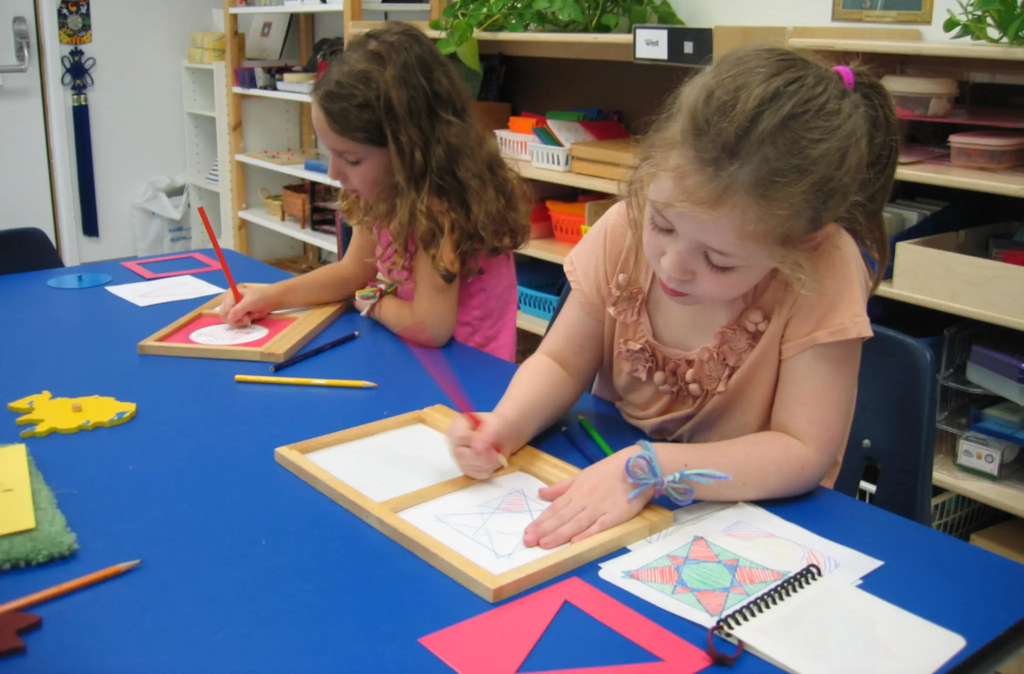
What Is an Anecdotal Record?
In early childhood education, an anecdotal record is a short, factual, and objective note written by a teacher or caregiver to capture a specific moment of a child’s behavior, interaction, or developmental milestone. Unlike standardized assessments or checklists, anecdotal records provide a narrative form of observation that captures real-time learning in natural settings, such as during play, snack time, circle time, or exploration.
The true power of an anecdotal record lies in its simplicity. It doesn’t require special tools, long forms, or advanced training. It requires attention, presence, and the ability to observe without judgment. When written well, an anecdotal record serves as a brief, focused snapshot packed with insight.
This kind of anecdotal observation is crucial because it documents behavior as it naturally unfolds. Educators don’t intervene or alter the situation; they watch, listen, and record what happens. This ensures the anecdotal record reflects the child’s authentic actions and choices.
Prêt à concevoir un espace propice à l'apprentissage ? Contactez-nous pour créer des solutions de mobilier sur mesure, adaptées aux besoins de votre classe.
How Anecdotal Records Enhance Child Development?
The consistent use of the anecdotal record provides educators with critical data to assess and support each child’s developmental progress. By observing and documenting real-time behaviors, teachers can monitor learning trajectories across all key domains of early childhood growth. These insights inform instruction, guide intervention strategies, and ensure alignment with developmental milestones.
Supporting Emotional and Social Growth
An anecdotal record captures the nuances of children’s emotional responses and peer interactions in real-life scenarios. These records allow educators to track emotional regulation, relationship-building, prosocial behaviors, and adaptation to group settings. They support early identification of social-emotional needs, making intervention more timely and targeted.
Tracking Cognitive Development and Problem-Solving
Educators can document evidence of memory, reasoning, decision-making, and concept application through anecdotal recording. Observational data collected via the anecdotal record reveal how children process information, solve problems, and transfer knowledge across activities. This helps refine instruction to meet the cognitive readiness of individual learners.
Observing Physical and Motor Skill Progress
The anecdotal record is an effective tool for monitoring fine and gross motor development. Teachers can assess coordination, precision, strength, and movement control in natural contexts. Data drawn from consistent anecdotal recording supports the early detection of motor skill delays and guides the introduction of age-appropriate physical challenges.
Tailoring Instruction Based on Developmental Needs
By analyzing anecdotal records, educators understand each child’s strengths and areas for improvement. This enables the development of differentiated learning plans and individual support strategies. The continuous nature of anecdotal recording ensures that instruction evolves in real time with the child’s developmental journey.
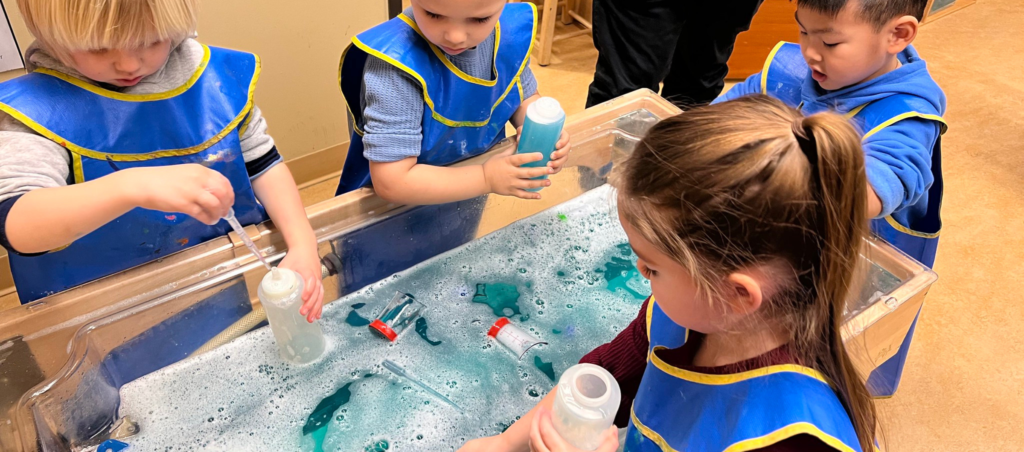
Understanding the key components of adequate anecdotal records lays the foundation for quality observations. The next step is to put these principles into practice. Writing an anecdotal record requires precision, objectivity, and a clear link to learning goals.
Key Components of Effective Anecdotal Recording
Educators must adhere to a consistent, structured approach to ensure that an anecdotal record provides meaningful and actionable insight. Effective anecdotal recording demands accuracy, objectivity, and alignment with developmental goals. A high-quality anecdotal record should capture what is seen in a way that supports analysis and informed decision-making.
Objectivity
The foundation of a reliable anecdotal record is objective language. Educators must document what was seen and heard without interpretation, bias, or assumptions. Descriptions should focus on observable behavior, avoiding emotional language or inferred intent. Objectivity ensures the data can be trusted across teams and settings.
Specificity and Clarity
A strong anecdotal record is precise. It includes explicit descriptions of actions, words, and context. Vague statements reduce the observation’s usability. Specific detail allows the record to be reviewed for patterns or changes over time and aids in accurately assessing developmental progress.
Contextual Information
Effective anecdotal recording includes contextual data such as date, time, setting, and activity. This information allows educators to understand the circumstances under which the behavior occurred and supports comparisons between similar observations in varied environments.
Developmental Relevance
Each anecdotal record should be linked to a relevant developmental domain or learning objective. Aligning observations with curriculum goals or child development frameworks ensures the record contributes to larger educational planning and assessment systems.
Consistency
Anecdotal records must be collected consistently across time and among different educators. Inconsistent or irregular recording limits the reliability of the data. Standardized procedures and templates for anecdotal recording support uniform documentation and better long-term tracking.
Prêt à concevoir un espace propice à l'apprentissage ? Contactez-nous pour créer des solutions de mobilier sur mesure, adaptées aux besoins de votre classe.
How to Write an Anecdotal Record?
Writing an effective anecdotal record requires precision, objectivity, and a deep understanding of its purpose in early childhood education. Whether you’re observing social behavior, language development, or problem-solving skills, each record must reflect accurate, unbiased observation tied to learning goals. This section explores writing quality anecdotal records using proven techniques and structured formats.
1 Understand the Anecdotal Record Definition and Purpose
The anecdotal record definition is a short, factual, narrative-style observation that documents a specific incident involving a child, usually in real-time. These records are not about interpretation but direct observation, which captures developmental progress or behavioral insights.
According to the definition of anecdotal recording, the observer must remain objective, avoiding assumptions or judgments. The goal is to gather authentic information that reflects the child’s learning process in natural settings. This approach makes anecdotal records a cornerstone of informal assessment in early education.
2 Follow a Structured Format
A clear and consistent structure helps maintain the quality of each anecdotal record. Many educators rely on a standardized anecdotal record template, which includes:
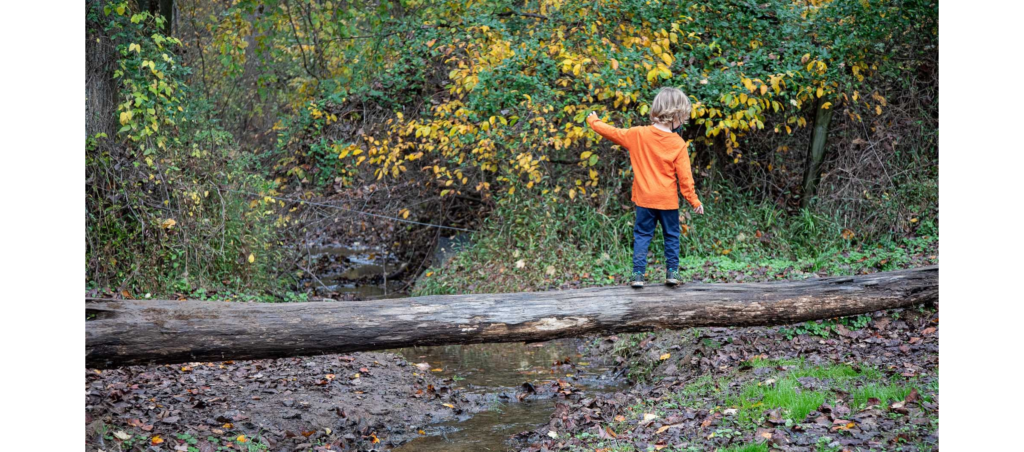
- Date and Time
- Child’s Name
- Observer’s Name
- Location and Activity
- Direct Observation (Objective Narrative)
- Developmental Domain or Learning Focus
A structured anecdotal record template ensures crucial contextual information is captured and allows for easier observation, sorting, and comparison. Schools using a unified template are more likely to generate usable data across classrooms and teams.
3 Focus on Specific, Observable Behaviors
An effective anecdotal record captures what was seen and heard, nothing more. Descriptions should avoid vague adjectives or emotional conclusions. Instead of writing “Sofia was upset,” write “Sofia crossed her arms, turned her back to the group, and did not respond when spoken to.”
High-quality anecdotal recording uses factual detail to paint a complete event picture. These objective observations allow educators to track developmental progress and behavioral patterns over time.
4 Use Authentic Language and Professional Tone
Whether you’re writing a formal anecdotal record example for a parent-teacher meeting or a quick note for internal review, maintain a consistent tone and vocabulary. Avoid jargon or vague language. Each entry should be clear, accurate, and easy for any educator or administrator to understand.
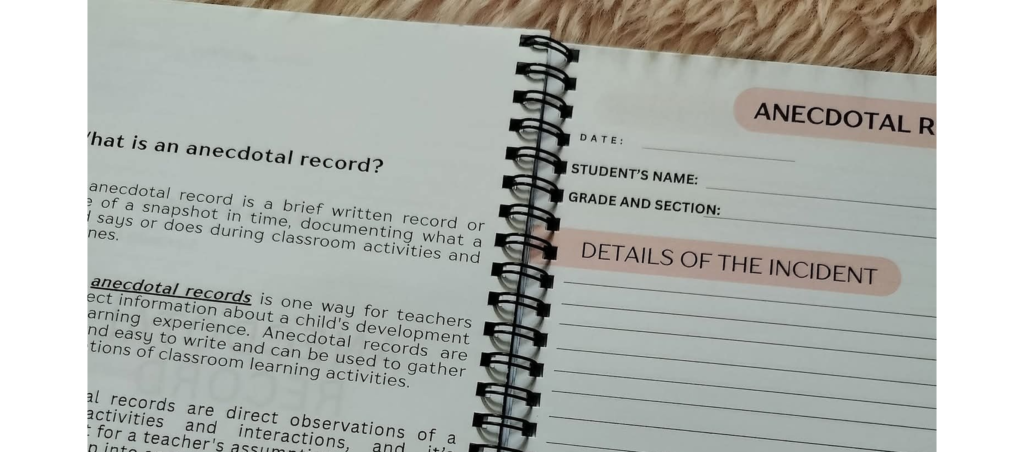
The anecdotal records’ meaning lies in their clarity and real-time value. A well-written record becomes part of the child’s long-term developmental profile, used in conferences, assessment reports, and curriculum adjustments.
5 Use Examples and Samples to Guide Quality
Reviewing a quality example of an anecdotal record can help educators internalize expectations for tone, format, and content. Below is a typical anecdotal record sample from a Montessori classroom:
Date: April 10, 2025
Time: 9:30 AM
Child: Ethan
Observer: Ms. Lin
Activity: Practical Life Area
Observation: Ethan selected the spooning activity. He carefully transferred beans from one bowl to another using a metal spoon. He completed the cycle twice, then returned the materials to the shelf.
This example anecdotal record reflects a child’s concentration, motor coordination, and ability to follow routine, documented clearly, without judgment.
Educators can also use shared documentation banks or online tools with anecdotal records and examples to support professional development and staff consistency.
You can download our free anecdotal record template here:
Anecdotal Record Template – Editable PDF

6 Practice and Review Regularly
Writing strong anecdotal records requires practice. Encourage regular peer reviews of written entries to build consistency across staff. Review previously written samples of students’ anecdotal records during team meetings to align on quality standards and developmental focus areas.
Over time, educators develop stronger observation skills and better insight into student learning. Quality anecdotal recording becomes second nature, transforming quick notes into robust educational evidence.
Anecdotal Record Example in a Real Classroom
Using the anecdotal record in a classroom provides authentic, real-time data about children’s developmental progress. Teachers use these records to document how students think, communicate, move, and interact, revealing patterns and behaviors that support personalized instruction.
In high-functioning early learning environments like Montessori or Reggio Emilia classrooms, educators often maintain anecdotal records to observe and reflect on each child’s unique growth. Below are several professional-level anecdotal record examples, each highlighting a different development domain and demonstrating the full potential of anecdotal recording.
Language Development
Date: March 22, 2025
Time: 9:45 AM
Child: Lucas
Observer: Ms. Chen
Activity: Morning Circle
Observation: When asked what sound the letter “S” makes, Lucas raised his hand and said, “It goes ssss like a snake!” He then traced the sandpaper letter with two fingers and said the sound again. He looked at his friend and said, “My name starts with S too.”
This anecdotal record captures phonemic awareness, peer interaction, and expressive language use. It demonstrates the value of anecdotal records in assessing early literacy skills.
Social-Emotional Development
Date: April 5, 2025
Time: 10:10 AM
Child: Noor
Observer: Mr. Daniels
Activity: Jeux en plein air
Observation: Noor invited two classmates to join her in building a sandcastle. When one peer accidentally knocked part of it down, Noor paused and said, “It’s okay. Let’s build it again.” She handed the peer another shovel and smiled.
This anecdotal record sample shows emotional regulation, problem-solving, and cooperative behavior. Over time, multiple samples of anecdotal records of students like this help track self-awareness and social resilience growth.
Cognitive and Problem-Solving Skills
Date: May 1, 2025
Time: 11:00 AM
Child: James
Observer: Ms. Wong
Activity: STEM Table
Observation: James used magnetic tiles to build a bridge. He tested it by rolling a car over it. When the tiles collapsed, he said, “Maybe I need a flat bottom.” He removed a layer and tried again. The car passed over successfully, and James clapped his hands.
This anecdotal record reflects persistence, hypothesis testing, and scientific reasoning. A collection of anecdotal records, such as examples, gives educators rich insights into how children process problems and apply knowledge.
Fine Motor and Practical Life Skills
Date: April 28, 2025
Time: 9:15 AM
Child: Sienna
Observer: Ms. Patel
Activity: Practical Life Table
Observation: Sienna used tongs to transfer cotton balls from one bowl to another. She focused for several minutes, adjusting her grip until each transfer was successful. She smiled after completing the set and returned the materials neatly to the tray.
This anecdotal record example supports documentation of fine motor development, concentration, and respect for materials, key areas in Montessori education.
Group Interaction and Peer Communication
Date: May 3, 2025
Time: 2:00 PM
Child: Andre
Observer: Mr. Lee
Activity: Group Storytelling
Observation: During a group storytelling session, Andre suggested a new ending to the shared story: “And then the dragon gave everyone candy because he was lonely.” The group laughed, and another child said, “Let’s draw that.” Andre smiled and began sketching the dragon scene.
This example anecdotal record reveals imagination, verbal fluency, peer influence, and engagement with group ideas, all of which can be aligned to language arts and social learning objectives.
The strength of the anecdotal record lies not in a single observation but in the accumulation of meaningful, real-time data over days, weeks, and months. When educators consistently collect and review a wide range of anecdotal records, they see the complete picture of a child’s developmental path. These authentic narratives support informed instructional planning, early intervention, and personalized learning experiences.
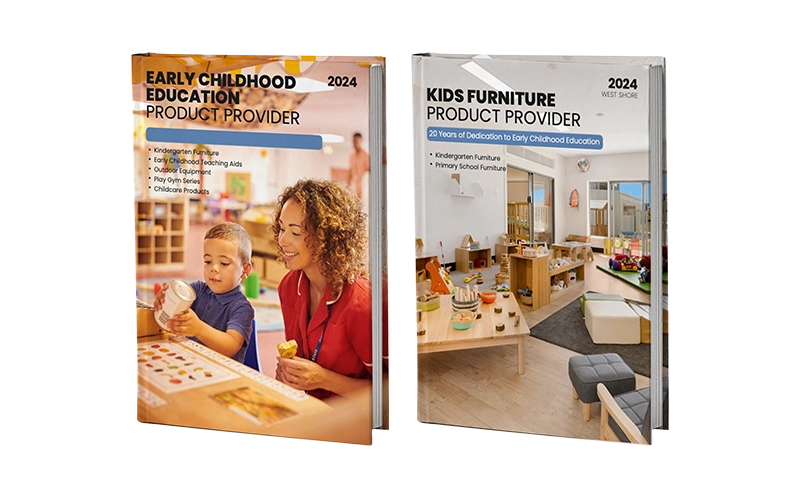
Anecdotal Records vs Other Assessment Methods
While anecdotal recording is one of the most powerful and flexible tools available to educators, it is not the only method for documenting student learning. In early childhood education, practitioners use various observation and assessment tools, each with strengths and limitations.
Comparing the anecdotal record with other commonly used methods is helpful for fully appreciating its value and versatility. These comparisons reveal that anecdotal records provide unmatched insight into the whole child, especially in dynamic, child-led environments such as Montessori or Reggio Emilia-inspired classrooms.
Checklists vs. Anecdotal Records
Checklists track whether a child can perform a specific skill. They’re quick and helpful for monitoring curriculum benchmarks, but they lack depth and context.
By contrast, anecdotal records document how a child approaches a task, how they feel about it, and what learning processes are involved.
| Aspect | Checklists | Anecdotal Records |
|---|---|---|
| Detail Level | Minimal (yes/no) | High (contextual and narrative) |
| Context | Missing | Present |
| Time Requirement | Fast | Moderate |
| Insight Depth | Surface-level | Deep and nuanced |
| Example Output | “Can sort by color” | “Lila said, ‘This is like the sun!’ while sorting” |
Rating Scales vs. Anecdotal Records
Rating scales assign behaviors a numerical score. They’re helpful for group comparison but often reduce complex behavior into oversimplified data.
Anecdotal records offer personalized insights and highlight motivation and social interaction.
| Aspect | Rating Scales | Anecdotal Records |
|---|---|---|
| Scoring | Numeric or descriptive | Narrative-based |
| Individualization | Limited | High |
| Context Provided | None | Yes |
| Use Case | Trend tracking | Deep behavioral insight |
| Example Output | “Cooperation: 3/5” | “Malik helped a peer stack chairs and smiled proudly” |
Time Sampling vs. Anecdotal Recording
Time sampling involves scheduled observations at fixed intervals. It’s useful for frequency tracking, but can miss significant spontaneous events.
Anecdotal recording captures real-time critical moments, allowing for more authentic, situational data.
| Aspect | Time Sampling | Anecdotal Records |
|---|---|---|
| Frequency Focus | Yes | No |
| Flexibility | Low | High |
| Context Inclusion | Limited | Rich context included |
| Best Use | Behavior frequency tracking | Capturing meaningful moments |
| Example Output | “Observed during 10:15–10:20” | “Child comforted peer after toy broke” |
Running Records vs. Anecdotal Records
Running records capture everything a child does in a defined time window. They offer depth but are time-consuming and often impractical.
Anecdotal records provide selective, purposeful insights without requiring continuous observation.
| Aspect | Running Records | Anecdotal Records |
|---|---|---|
| Duration | Long, detailed | Short, focused |
| Practicality | Low in busy classrooms | High |
| Data Type | Exhaustive log | Snapshot of meaningful events |
| Time Investment | High | Moderate |
| Example Output | “Child walked to shelf, selected…” | “Child walked to the shelf, selected…” |
Portfolios and Work Samples
Portfolios compile student work over time, showing growth through artifacts. But without context, these samples can’t reveal the learning process.
Pairing a portfolio with anecdotal records adds insight into the child’s thinking and emotional connection to their work.
| Aspect | Portefeuilles | Anecdotal Records |
|---|---|---|
| Content Type | Physical/student-generated | Teacher-observed behavior |
| Contextual Insight | Usually missing | Included |
| Use Case | Showcasing progress | Interpreting learning behaviors |
| Complementary Value | High when combined | High when paired with student work |
| Example Output | “Picture of painting” | “Child said, ‘This tornado is scary but fun!’” |
Why Anecdotal Records Stand Out
The anecdotal record’s flexibility, authenticity, and child-centered perspective make it uniquely powerful. Unlike standardized tools, it captures the emotional and cognitive dimensions of learning in real time.
Anecdotal records:
- Reflect the child’s voice and intentions
- Allow educators to observe without interrupting
- Offer context-rich documentation for deeper reflection
- Support both individual and group analysis
- Help build comprehensive developmental portfolios when compiled over time
Whether used in a Montessori, Reggio, or traditional preschool classroom, the anecdotal record offers insight that no checklist, score, or sample can fully replicate.
Common Mistakes to Avoid with Anecdotal Recording
Even though anecdotal recording is one of the most potent tools in early childhood education, its effectiveness depends entirely on how well it is executed. A poorly written or inconsistent anecdotal record can lead to confusion, misinterpretation, or missed developmental cues. Avoiding these common mistakes is critical to maximizing the value of your observations.
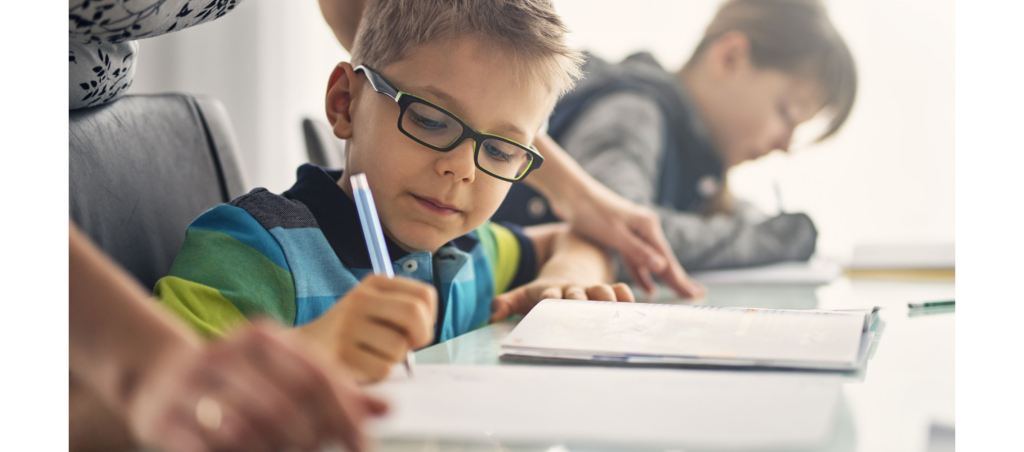
Using Subjective or Emotional Language
One of the most frequent errors in anecdotal records is including personal interpretation or emotional assumptions. Educators must stick to observable facts, not inferred feelings or internal motivations.
Poor example: “Liam was angry and threw the toy out of frustration.”
Correct version: “Liam furrowed his brows, raised his voice, and tossed the toy across the mat.”
Maintaining objectivity ensures your anecdotal record remains a reliable piece of developmental documentation.
Being Too Vague or General
An effective anecdotal record is specific. Vague language like “had a good day” or “played nicely” lacks the detail needed for assessment or planning. Precision gives context to behavior and allows for comparison over time.
Instead of: “Emma shared toys.”
Use: “Emma handed a puzzle piece to Ava and said, ‘You can use this one next.’”
Specific actions, speech, and context turn your anecdotal record sample into meaningful data.
Writing Too Much or Too Little
While anecdotal records should be brief, writing too little can devalue them. On the other hand, overly long narratives become difficult to analyze and store.
The goal is to capture one focused behavior or interaction clearly and concisely. Use a structured anecdotal record template to stay within boundaries while including the essential context, actions, and dialogue.
Delaying the Observation Entry
Delaying your writing reduces accuracy. Memory fades quickly, and key details may be lost or altered. Best practice is to complete anecdotal records immediately after the event or during the observation using shorthand or voice-to-text tools if needed.
Timely anecdotal recording preserves authenticity and reliability.
Failing to Connect to Developmental Goals
A strong anecdotal record isn’t just about what happened; it’s about why it matters. Failing to align the observation with developmental domains (e.g., fine motor, language, socio-emotional) makes the record less useful for planning and assessment.
Every example of an anecdotal record should serve a purpose: to illustrate developmental growth, identify needs, or support instructional strategy.
Inconsistency Across Observers
Data becomes fragmented when multiple teachers record observations using different formats, styles, or criteria. Standardizing an anecdotal record template and offering professional development ensures that all staff understand the anecdotal recording definition, tone, and expectations.
Consistency is critical for building a cohesive picture across a class or program, especially when evaluating multiple samples of student anecdotal records.
Over-Reliance on Anecdotal Records Alone
While anecdotal records are incredibly valuable, they should not be used in isolation. A well-rounded assessment system includes portfolios, checklists, and family input. The anecdotal record examples may lack broader context or comparison points.
Balance anecdotal insights with complementary tools to ensure deep and comprehensive documentation.
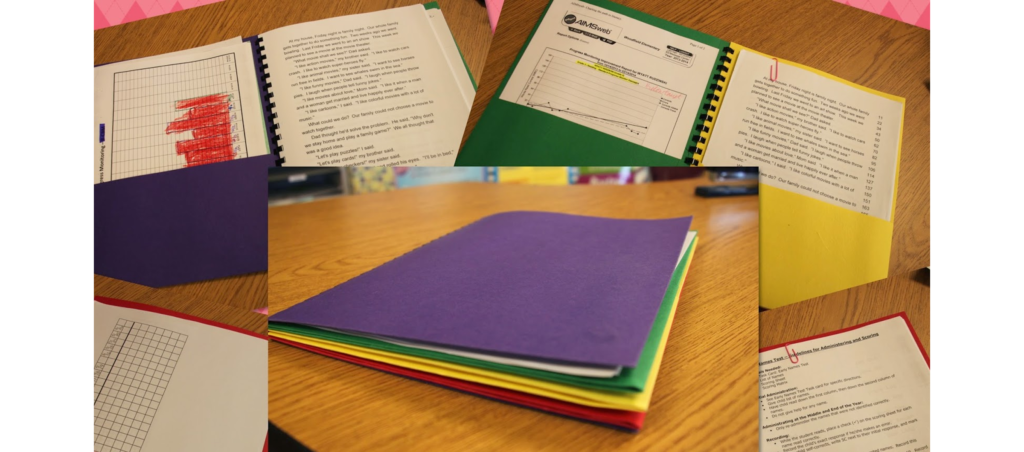
Organizing and Managing Your Anecdotal Records
Anecdotal records are only as valuable as they are usable. Without thoughtful organization and a consistent system, even the most insightful observations can lose their impact. To turn daily classroom moments into meaningful anecdotal data, educators and administrators must implement a streamlined approach to recording, sorting, and reviewing information. When compiled over time, these anecdotal data examples become robust evidence for assessment and decision-making. A well-managed anecdotal record system not only supports individual learning plans but also strengthens communication across teams, informs curriculum planning, and enhances the professional culture of documentation.
Choose a Recording System That Fits Your Setting
Selecting the correct format is the first step toward sustainable anecdotal recording. In digital-forward schools, platforms such as HiMama, Tapestry, or Google Sheets enable educators to input real-time records, categorize them by domain, and access them across devices. These tools improve collaboration, reduce paperwork, and simplify compiling and analyzing multiple anecdotal data examples. On the other hand, for classrooms that value tactile documentation or have limited access to devices, printed anecdotal record templates offer a reliable and accessible solution. What matters most is consistency across the team. Regardless of the method, all staff must follow the same system to ensure retrievable and dependable data.
Categorize Records by Developmental Domain and Behavior
To maximize the utility of your anecdotal records, every observation should be labeled by developmental domain and specific behavior. Common domains include cognitive, physical, language, and social-emotional development. Adding behavioral tags, such as “collaboration,” “problem-solving,” or “self-regulation,” makes it easier to track patterns across time. For example, a series of records under the “language development” category tagged with “verbal reasoning” can help identify whether a child is progressing in expressive communication. This level of organization allows for quicker retrieval of samples, especially when compiling data for parent meetings, assessments, or internal reviews.
Maintain a Consistent and Professional Structure
Standardizing the structure of your anecdotal records ensures clarity across teams and prevents the inclusion of subjective or incomplete data. Each anecdotal record should follow a simple, repeatable format: date, time, child’s name, objective description of the observed behavior, context or setting, and the related developmental domain. Avoid interpretations or assumptions; the focus should remain on what was seen or heard. A well-written anecdotal record sample might read: “At 10:15 AM in the block area, Ava stacked four cubes, said ‘I’m making a tower like the tall building,’ and adjusted the base after it wobbled.” This provides insight into her motor skills, problem-solving, and expressive language.
Record Observations as Soon as Possible
Anecdotal data loses accuracy when written long after the observed event. Recording immediately or within the same day is critical for preserving objectivity and detail. The most accurate observations often come from quick notes or voice memos taken in the moment and later transcribed into a complete anecdotal data example. Schools should build systems that allow educators to pause and capture meaningful moments, even during busy times. Delayed documentation often leads to generalizations or forgotten context, reducing the quality of the collected data.
When properly organized, consistently recorded, and thoughtfully reviewed, anecdotal data become more than documentation; they become a core part of a school’s assessment strategy and professional learning culture. They empower educators to respond to each child’s unique developmental needs and ensure that decisions are grounded in real, observable behavior.
How to Use Anecdotal Records for Assessment
Anecdotal records are not just for documentation; they are strategic tools for assessment and instructional planning. When used effectively, anecdotal records provide real-time, qualitative data that helps educators evaluate developmental progress, identify areas of concern, and personalize learning strategies.
In contrast to more rigid assessment methods, anecdotal recording allows for authentic, child-centered evaluations based on what educators observe in natural, unstructured settings.
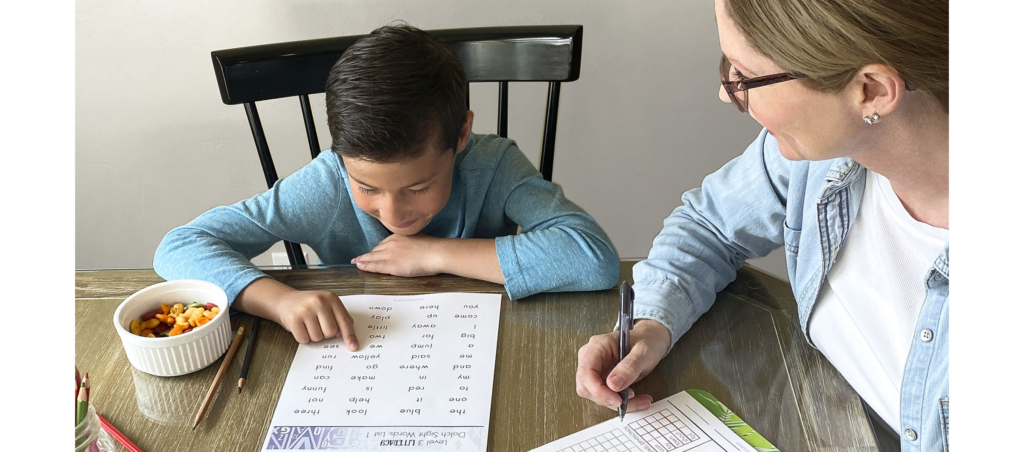
Aligning Observations with Developmental Domains
Each anecdotal record should be purposefully aligned with a specific development area, such as social-emotional, cognitive, language, or physical skills. This alignment turns raw observation into usable data that supports formative assessment.
For example, a sample of anecdotal records of students might be grouped by domain:
- Language development: verbal expression, vocabulary, storytelling
- Motor development: fine motor precision, coordination
- Cognitive development: reasoning, problem-solving, sequencing
- Social-emotional development: cooperation, empathy, self-regulation
This categorization ensures that educators can track progress across multiple developmental dimensions, not just academic achievement.
Using Anecdotal Records in Formative Assessment
Formative assessment focuses on learning in progress, rather than measuring outcomes at the end of a unit or term. Anecdotal records excel in this area because they capture spontaneous behavior in context, offering insight into a child’s learning process, not just the result.
Teachers can review multiple anecdotal records examples to:
- Monitor emerging skills or delays
- Adjust learning activities to meet current interests and abilities
- Identify patterns of behavior that signal deeper needs
When combined with other informal tools (e.g., student work samples or checklists), anecdotal recording creates a layered, comprehensive assessment model that respects the individuality of each child.
Informing Individual Learning Plans (ILPs)
For students with diverse learning needs, anecdotal record samples are a reliable foundation for individualized planning. A detailed example of an anecdotal record can reveal a student’s preferred learning style, motivational triggers, and emotional response to different activities.
When used consistently, these records support:
- The development of Individualized Education Plans (IEPs) or ILPs
- Accurate parent-teacher conferences with evidence-based insight
- Targeted interventions or referrals when necessary
Unlike standardized test results, which provide limited context, the anecdotal record helps professionals understand the why behind the child’s behavior, which is critical when designing support strategies.
Guiding Reflective Teaching Practice
The consistent review of anecdotal records encourages educators to reflect on their teaching practices. Reviewing a variety of anecdotal recording entries allows teams to evaluate:
- Which instructional methods are working
- Which classroom areas spark the most engagement
- Where adjustments are needed in structure, pacing, or materials
This fosters professional dialogue, improves observation accuracy, and strengthens alignment between teaching practice and child development.
Communicating with Families and Stakeholders
Anecdotal records are also powerful communication tools. They offer parents a clear, relatable picture of their child’s learning journey. By sharing selected anecdotal record examples during parent conferences, educators can:
- Showcase progress in a meaningful, story-based format
- Highlight specific strengths or areas of support
- Foster trust and shared responsibility in the learning process
Adding anecdotal observations to portfolios or progress reports makes the documentation richer and more human, helping parents feel seen and involved.
Supporting Curriculum Evaluation and Planning
When compiled over time, anecdotal records become a vital data source for evaluating curriculum effectiveness. By reviewing patterns across the class, educators can:
- Identify which lessons support deeper learning
- Understand how different groups respond to different materials
- Adjust long-term plans based on developmental readiness
This assessment feedback loop, observing, recording, reflecting, and adjusting, is what makes anecdotal recording a cornerstone of progressive early childhood education.
Conclusion: The Future of Anecdotal Records in Early Education
Throughout this article, we’ve explored the true purpose and practice of the anecdotal record, from its definition and structure to its role in child assessment and curriculum planning. As educators aim to support the full spectrum of student development, anecdotal records remain unmatched in their ability to capture the nuance of real-time learning. They offer insights that formal tools often overlook: a child’s curiosity during unstructured play, their creativity in problem-solving, or their social cues in peer interaction. By collecting, organizing, and reflecting on these meaningful observations, schools can create learning environments that respond to the individual, rather than the average. Consistent anecdotal recording doesn’t just document learning; it helps drive it.
As the early education landscape continues to shift toward more holistic, child-centered models, the infrastructure around observation must evolve, too. Classrooms that are thoughtfully designed, environments where movement flows naturally and materials invite exploration, make observational documentation more effective. This is particularly true in early learning spaces where the physical setting reinforces pedagogy. High-quality, purpose-built preschool furniture contributes significantly to the success of observation-based assessment models. Teachers can move freely and observe children in their most authentic state in settings equipped with adaptive learning materials, durable child-sized furnishings, and open-ended workspaces. In such environments, often supported by manufacturers like Meubles West Shore, anecdotal records become more than a formality; they become foundational.

Frequently Asked Questions (FAQ)
When is it most appropriate to use an anecdotal record?
Anecdotal records are best used to capture spontaneous, significant behaviors or interactions that reveal developmental progress, emerging interests, or social-emotional skills. They are especially effective during free play, project-based learning, Montessori work cycles, or any unstructured activity where children act independently. Use anecdotal recording when behavior is worth documenting, not because it is required, but because it is meaningful.
How often should educators record anecdotal observations?
To ensure accuracy and developmental relevance, educators should complete anecdotal records daily or weekly, depending on classroom dynamics and staffing. The key is consistency. Capturing small, authentic moments regularly provides a more complete picture of each child’s growth.
In what ways do anecdotal records support parent-teacher communication?
Anecdotal records provide concrete, narrative-based examples of a child’s behavior, learning progress, and personality. These real-time observations help educators clearly explain developmental milestones during parent meetings and build trust through transparency, showing families what’s happening in the classroom in a relatable, detailed way.
What is the difference between anecdotal and running records in early childhood education?
An anecdotal record is a short, focused note that captures a specific behavior or interaction when it happens. It is selective, concise, and highlights meaningful learning events. In contrast, a running record is a continuous, detailed account of everything a child does over a set period. While running records provide depth and context, they are time-consuming and more complicated to manage in busy classrooms. Anecdotal records are more practical for daily use, whereas running records are best reserved for targeted assessments.
Can anecdotal records be used for children with special needs?
Yes, anecdotal records are highly effective for documenting the development of children with special needs. They allow educators to capture authentic behaviors, social interactions, and learning progress in natural settings, which may not be visible through standardized tests. These records provide valuable evidence for designing Individualized Education Plans (IEPs), tailoring interventions, and communicating with families and specialists. When collected consistently, anecdotal records help track progress and inform inclusive teaching practices.
Are there any disadvantages to anecdotal record keeping?
While anecdotal record keeping offers rich, contextual insights, it also comes with challenges. It can be time-consuming, especially in large classrooms, and data quality depends heavily on the observer’s skill. Without training or consistency, anecdotal records may become subjective, vague, or infrequent to support meaningful assessment. Using standardized templates and professional development is key to maximizing their value.

